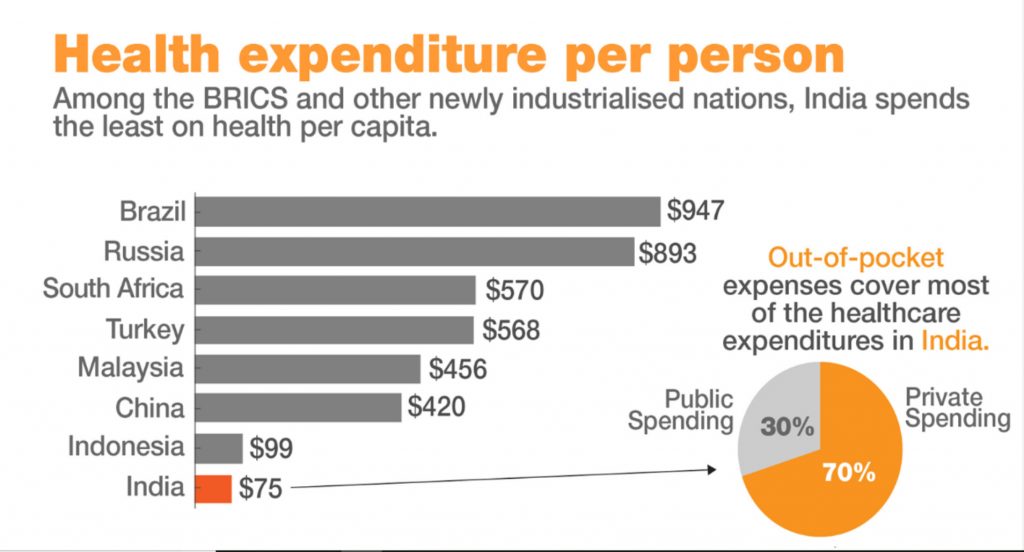
Post-pandemic Healthcare: Challenges & Opportunities
As the entire world is under the crunch of COVID-19, one thing we are all sure about is that there’s light at the end of the tunnel. Sooner or later we will have a vaccine and newly approved treatments to curb the virus attack and eventually everything will be back to New normal!
Yes, you read it right! Our normal will have new dimensions now. The life that we get back to will be momentously different from the one we had before the outbreak.
Reports on Hospitals being swamped with patients, shortage of doctors and healthcare workers, shortage of PPE kits for medical professionals and hospitals failing to accommodate critically-ill patients have all made their way onto the news during these unprecedented times. This certainly highlights the significance and need of a robust healthcare system.
Changes In Healthcare System
The long-fought COVID-19 war will certainly result in grave repercussions as well as a plethora of changes in the healthcare landscape. The healthcare sector should gear up for yet another challenge soon after the pandemic.
A wave of changes would possibly hit the healthcare industry. Visiting hospitals and clinics are not going to be an easy task as it was. New diagnostic parameters, anti-infection protocol, heavy sanitization, mandatory use of protective gear by doctors and patients, steps to avoid crowds at hospitals, and many more regulations will come into the picture.
Technological Advancements In Healthcare

COVID-19 has ignited a spark of innovation in the healthcare industry. This spark can certainly light up new dimensions in the healthcare arena by making use of advanced technologies and inventions.
The use of Artificial Intelligence, Robotics, and the application of virtual healthcare will become more evident in the healthcare sector during the post-pandemic period. This paradigm shift in the healthcare industry could make the system safer, affordable, and accessible to a certain extent.
Hike In Healthcare Cost
Providing better healthcare facilities and ensuring safety measures in hospitals and clinics will eventually increase healthcare costs. Doctors would be compelled to use PPE kits, N95 masks, and other safety gear even during a normal checkup. Advanced safety measures and periodic sanitization in hospitals would further add up the cost of healthcare.
Increased healthcare expense along with the fear and stigma associated with COVID-19 would probably reduce the patient footfalls to hospitals. Doctors, as well as patients, will be at the receiving end of this. Such a situation would give rise to dangerous practices like self-medication among patients. This would have severe and far-reaching implications on a person’s health. Low occupancy in hospitals would adversely affect the healthcare economy as well.
Burnouts Among Healthcare Staff

The global pandemic has affected frontline healthcare professionals to a great extent. They are enduring extreme work conditions and sacrifices in order to help the infected. The anxiety of knowing that one’s life is at risk when doing their job can be very challenging for healthcare workers. It’s physically and mentally draining. This will lead to an inevitable spike in burnouts and Post-Traumatic Stress Disorder (PTSD) among the healthcare staff. So the medical personnel should mentally and physically prepare themselves to overcome the challenges posed by this unprecedented pandemic.
Shift In Global Focus
The coronavirus pandemic has highlighted the shortcomings of healthcare systems worldwide. Many countries across the globe, irrespective of their economic and social status are struggling to flatten the virus curve. In India, cities like Mumbai and Chennai are on the verge of a public health emergency crisis. Alongside the lack of infrastructural facilities to accommodate the huge number of patients, a shortage of doctors and healthcare professionals, is turning the situation alarmingly grim in most of the places.
The healthcare system in the country needs an upgrade on every level, from infrastructural development to process management. At present, India’s public financing for health remains at less than 1 percent of the gross domestic product (GDP). While the Centre is committed to raising this figure to 2.5 percent by 2025, states should also ramp up their healthcare spending allocations.

The doctor to population ratio in the country is also not healthy. While the World Health Organization (WHO) prescribes a doctor-population ratio of 1:1000, in India it is 1:1445. This showcases the need for deploying more number of qualified doctors in the healthcare spectrum.
In the upcoming days, we can expect not only the Indian Government but also authorities from across the world to come up with plans and actions to rejuvenate the healthcare industry on a global scale. As countries give more focus to healthcare, health diplomacy will become the talk of the town. Countries like India can certainly expand its global diplomatic footprint in the post-COVID-19 world by making use of its resources.
In short, the post-pandemic era will be an ocean of uneven waves when it comes to the healthcare sector. There will be rogue waves in the form of repercussions followed by ripples in the form of new healthcare developments. So, once the pandemic settles, don’t panic and loosen your seat-belts, Instead steady the ship and be on the forefront to take on the next challenge that’s coming our way!